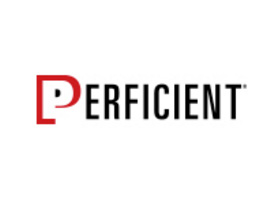As of March 29th, Microsoft made the decision to publish new VM’s which archived a bunch of Az, Azure, and AzureRM modules. The side effect of this was that when any of the deployment API scripts were run in Azure DevOps, it would throw an error. ‘Azure.Storage’ version 4.4.0 or greater is required. At C:\Users\VssAdministrator\Documents\WindowsPowerShell\Modules\EpiCloud\0.13.15\EpiCloud.psm1:189 […]
Posts Tagged ‘database’
EpiServer DXP Deployment API – Direct Deploy
As of Update 357, Optimizely (EpiServer) released Direct Deploy into their Deployment API, Episerver.PaaS.EpiCloud. This update changes a couple of my scripts to allow major speed improvements when deploying into the integration environment. In this post, we will go through the following: How does the current deployment to Integration work? Why Direct Deploy? Why does […]
Is It Time to Upgrade Oracle?
Current Support Policies If you are on Oracle EBS 12.1 or database 12c or below, you might want to consider upgrading. Oracle support policies change, so be sure and check the latest updates, but at the time of this writing, premier support for EBS 12.1 ends in December 2021. Currently Oracle does not plan to […]
Zombieland – A Guide to Waking the Dead
When it comes to establishing a successful marketing automation strategy, you have to know how to gain the most from the records you already have. Your lead data has the power to drive campaign initiatives, budgeting and resource allocation, personalization efforts, message relevancy and can directly impact retention and growth. The Challenge In the most […]
Episerver DXP Environment Deployment API PowerShell Scripts – Part 3
In my previous posts, we went over the deployment process in the EpiServer DXP environment. The first post went through the original methods that allow for deployment into the DXP environment. The second post went through update 313, which was a massive deployment API update, as well as how to use the API to export an environmental database, […]
Episerver DXP Environment Deployment API PowerShell Scripts – Part 2
In my last-post, we went over the deployment process in the EpiServer DXP environment. I mentioned that the next post would be related to using this within Azure DevOps, but I need to make a slight adjustment based on today’s update. As of April 27th, 2020, EpiServer released their weekly update #313, which included a lot […]
The Increasing Need for Database Clustering
The database is a significant piece of any application, ready to store and retrieve information for manipulation. The database server itself might be the back-end of a database application (the occurrence), or it might be the equipment PC that has the example. Now and again, it might even allude to the mix of both equipment […]
Oracle ERP Cloud: Clutter Free Supplier Database
Improving the Quality & Accuracy of Your Supplier Database In the information era data ages rapidly. Organizations deal with data changes as trading partners relocate, mergers take place, or employees move from one organization to another. In addition, the database is loaded with duplicate, inaccurate and incomplete data. Organizations incur huge costs allocating resources towards […]
Working With Multiple LOCAL_XE Databases In Siebel IP2016
In Siebel IP2016, the Sybase database was replaced with Oracle’s own XE database. The switch has presented some advantages and some drawbacks. One of the advantages is that you can have multiple instances. In my case, I have one instance for each IP2016 project that I am working on. This is the blog that I […]
Basic usage about Hibernate
What is Hibernate? Hibernate, as an ORM (Object rational Mapping) solution, effectively “sits between” the Java application data access layer and the Relational Database, as can be seen in the diagram above. The Java application makes use of the Hibernate APIs to load, store, query, etc its domain data. Why use Hibernate? High Cross-database portability […]
3 Reasons to Use Amazon DynamoDB for Data Management
Data management is at the heart of every enterprise, especially with online operations. Though many have used MySQL relational databases to manage their data, the rise of NoSQL (Not Only SQL) and its faster data operations has come into use with the amount of data being created. One of the leading NoSQL platforms on the […]
Processing Flat Files in Oracle Database
These days most of the companies are using Oracle as their database to maintain their data. SQL*Plus is the major tool to access the Oracle DB because it is more secure than other tools. Handling flat files in the Oracle DB by using SQL*Plus is difficult one. SQL Loader is the one which is very use […]











